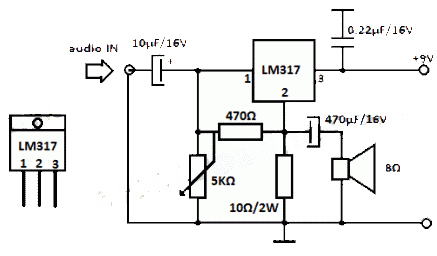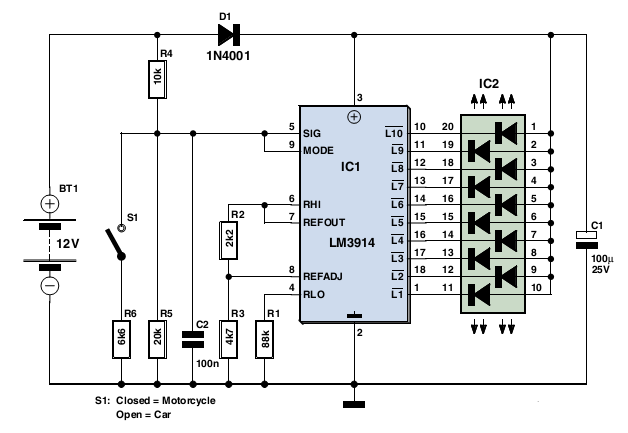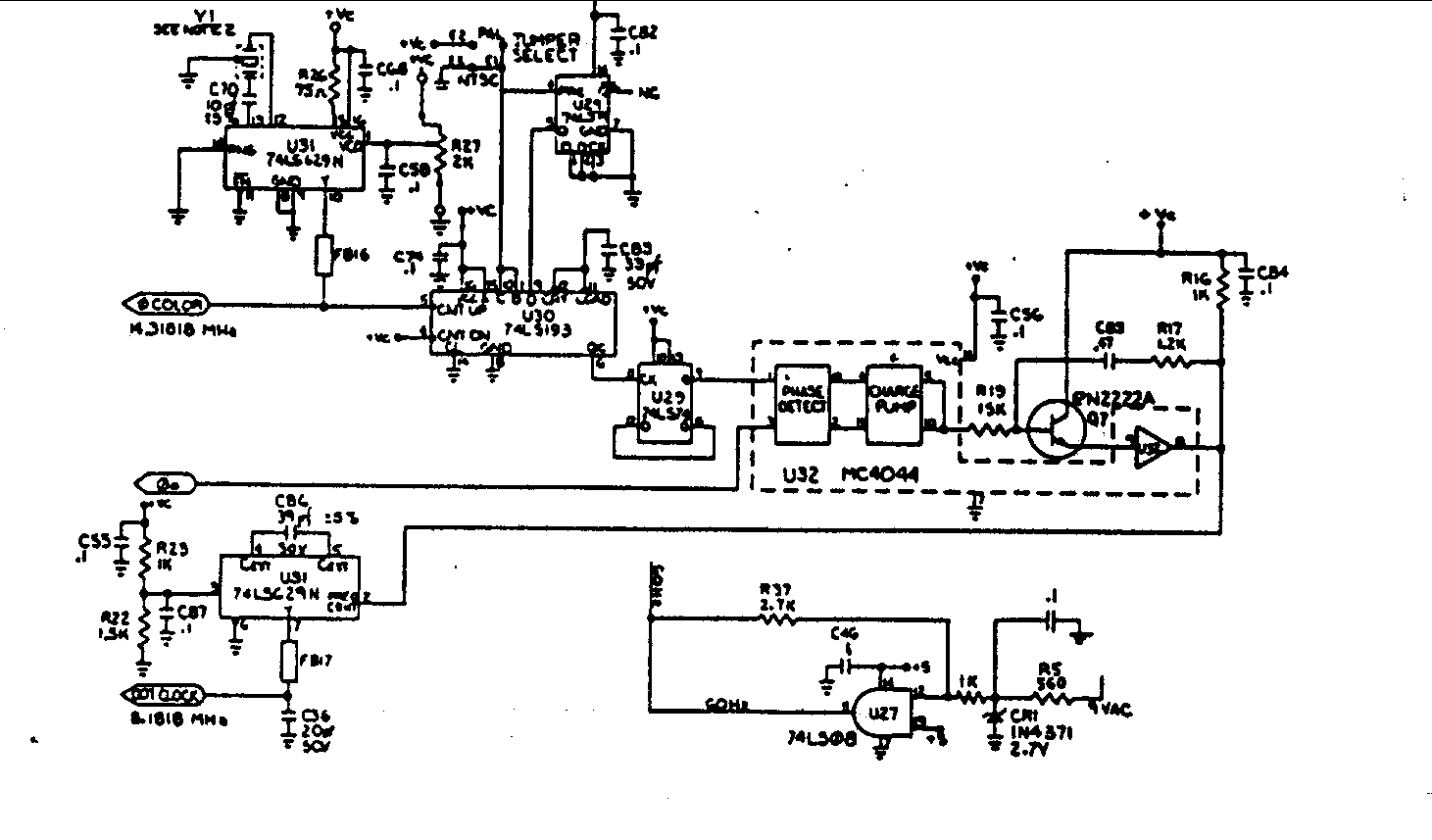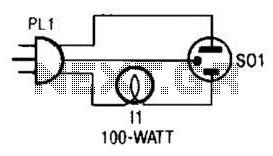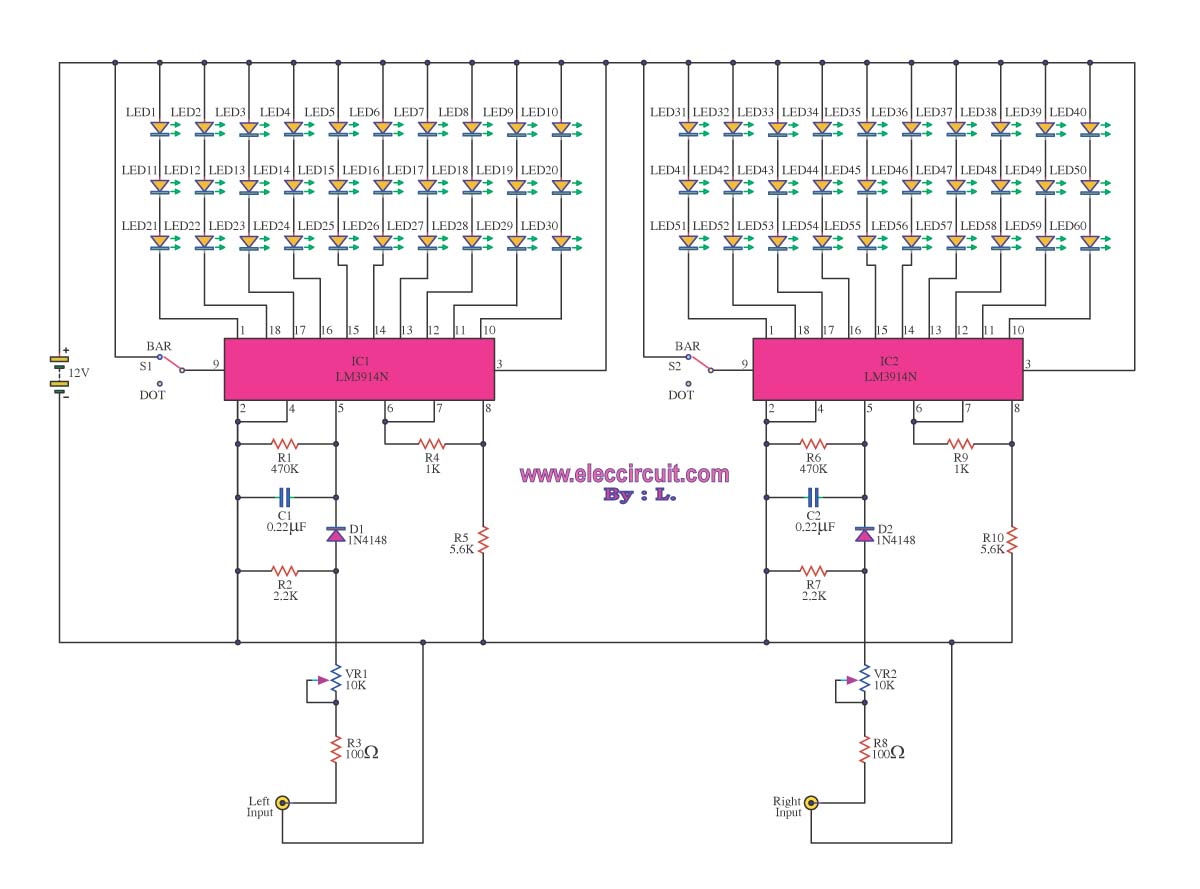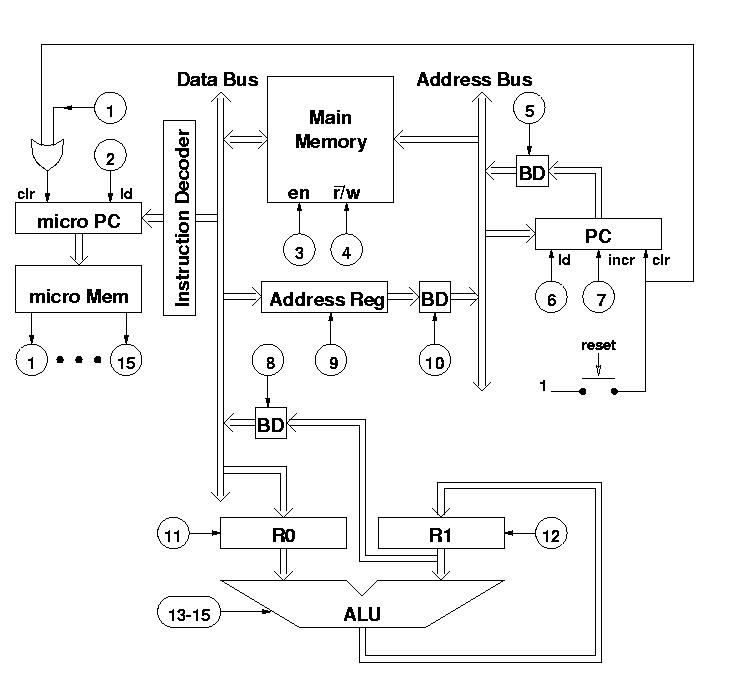
Ultimate Continuity Tester Hides Many Tricks Up Its Sleeve
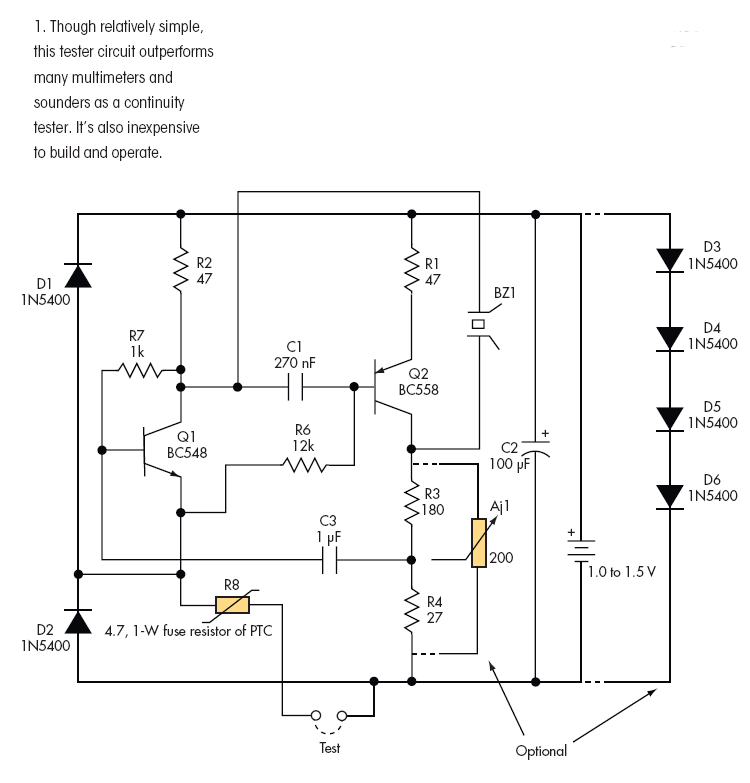
At the time, there was a desire to construct an ultimate continuity tester, leading to the creation of a wish list of required features. A genuine continuity tester is needed, as many multimeters and sounders react to resistances as high as hundreds or even thousands of ohms, rendering them nearly useless in various situations. Within a circuit board or system, medium-conductivity paths are prevalent, causing frequent false alarms. A connector, PCB track, or wire typically has a resistance below 1 ohm, and a threshold significantly higher than that leads to erroneous indications. Speed is another critical factor; many testers require contact times of tens of milliseconds or more, making it frustrating to test numerous connections quickly. The design should be inexpensive to manufacture and operate, necessitating a minimal number of low-cost components and low power consumption from a budget-friendly power source. This eliminates the typical 9-V battery, which is inefficient and costly. A power switch is also avoided, as it is often forgotten, leading to battery drain. The circuit, while seemingly unimpressive at first glance, meets all these requirements and more. It resembles a basic multivibrator, but the configuration is crucial. Transistors Q1 and Q2 form a two-stage, non-inverting amplifier, with input and output connected via capacitor C3 to induce oscillations. Each stage's gain is carefully defined: Q1 by the ratio of R4 to R1, and Q2 by the ratio of R2 to the sum of R8 and the resistance between the test probes. Oscillation occurs when the product of these gains exceeds unity. With the specified values, oscillation is achieved when the contact under test is below 5 ohms. Different values can be obtained by adjusting the R3/R4 ratio or replacing both resistors with a trimpot, Aj1. To maximize drive with a low supply voltage, the piezo buzzer (BZ1) is connected between the antiphase outputs of the oscillator, producing sufficient sound for a laboratory or office environment. Resistor R8, along with diodes D1 and D2, protects the tester from accidental connection to a live circuit, using a 1-W, preferably fusible, resistor. For enhanced protection, it can be replaced with a positive temperature coefficient resistor, allowing it to endure prolonged connections across the mains. Optional diodes D3 to D6 can be added in parallel with the battery for additional safeguarding. The circuit operates from a single standard or rechargeable AA cell, functioning effectively between 1 to 1.5 V. A power switch is unnecessary, as the test terminals also serve as a switch. The quiescent current is minimal, typically in the hundreds of nanoamperes, increasing to about 10 mA when the terminals are shorted, allowing the battery to last for years and enabling soldering in place. The buzzer can be any affordable passive type. This circuit exceeds the requirements of an ultimate continuity tester by not only measuring resistance but also evaluating the impedance presented to the test probes. In certain circumstances, this distinction can be significant. For instance, the secondary of a 50/60-Hz transformer may have a DC resistance below the 5-ohm threshold, but its impedance is primarily inductive and exceeds 5 ohms, preventing oscillation. Instead, a brief click will be heard when the circuit is activated, as BZ1 receives a pulse through R2 and R4, which occurs whenever a galvanic connection is made between the probes.
The ultimate continuity tester circuit is designed to provide accurate and rapid testing of low-resistance connections while avoiding common pitfalls associated with traditional multimeters. The non-inverting amplifier configuration ensures that the circuit is sensitive to low resistances, allowing it to detect connections that other testers may miss due to their higher resistance thresholds. The oscillation condition is crucial for the operational functionality of the tester, as it allows for audible feedback when a good connection is made.
The integration of a piezo buzzer provides a practical solution for indicating continuity without requiring expensive or bulky components. The protection mechanisms, including the fusible resistor and optional diodes, ensure that the circuit can withstand accidental connections to live circuits, enhancing safety and reliability in various testing environments. Additionally, the choice of using a low-voltage power source, such as a single AA battery, not only reduces costs but also simplifies the design, making it accessible for DIY enthusiasts and professionals alike.
Overall, this design exemplifies a balance between functionality, cost-effectiveness, and user convenience, making it an ideal tool for anyone needing a reliable continuity tester in their electronic toolkit. The ability to measure impedance, in addition to resistance, further enhances its utility, providing users with more comprehensive diagnostics for their electronic components and systems.At the time, I wanted to build The Ultimate Continuity Tester, and I established a wish list of all the features I required: A real continuity tester. Too many multimeters and sounders react at resistances as high as hundreds or even thousands of ohms, which makes them practically us
eless in many cases. Within a board or a system, there are always medium-conductivity paths everywhere, so they sound most of the time. A connector, a PCB track, or a wire, even a long one, has a resistance generally below 1. Having a threshold much higher than that generates false alarms. Speed. Many testers require a contact of tens of milliseconds or more, which makes the testing of large numbers of connections very frustrating.
It is impossible to swipe quickly across a large number of pins. Cheap to make and use. That meant a very small number of dirt-cheap components and a power consumption as frugal as possible from a cheap power source. This ruled out the usual 9-V battery, one of the least efficient and most expensive sources available.
No power switch. You invariably forget it`s on the afternoon preceding your holiday leave, and timers aren`t good enough. They tend to go off unnoticed just when you reach the wanted connection. At first sight, the circuit in Figure 1 doesn`t seem very impressive, but it fulfills all of these requirements, and then some.
It looks like some half-cooked multivibrator, but appearances can be deceptive. Q1 and Q2 form a two-stage, non-inverting amplifier, whose input and output are connected via C3 in order to cause oscillations. Each stage has its gain carefully defined: Q1 by the ratio of R4 to R1, and Q2 by the ratio of R2 to the sum of R8 and whatever sits between the test probes.
When the product of these gains exceeds unity, oscillation occurs. With the values shown, the oscillation condition is met when the contact under test is less than 5. Other values are possible by altering the R3/R4 ratio, or both resistors can be replaced by a trimpot, Aj1. To maximize the drive with the low supply voltage, the piezo-buzzer (BZ1) is connected between antiphase outputs of the oscillator.
The resulting sound isn`t very loud with a standard transducer, but it`s quite sufficient for a lab or office environment. R8, together with D1 and D2, protect the tester in case it`s accidentally connected to a live circuit.
It`s a 1-W, preferably fusible, resistor. For an extended and resettable protection, it can be substituted with a positive temperature coefficient resistor. If so, the resistor will be able to withstand a prolonged connection directly across the mains. Optional diodes D3 to D6 can be installed in parallel with the battery to ensure its protection. The battery can be a single standard or rechargeable AA cell, since the circuit operates from 1 to 1.
5 V. A power switch is unnecessary because the test terminals also act as a switch. The only quiescent current is caused by leakages in the components ”typically in the hundreds of nanoamperes range. When the terminals are shorted, the current rises to about 10 mA. So in normal operation, the battery will last for years, and it can be soldered in place. The buzzer can be any cheap, passive type. As noted, this circuit goes beyond the requirements of the ultimate continuity tester. For example, it not only checks the resistance, but also the modulus of the impedance presented to the test probes.
In some cases, this can make a big (and useful) difference. The secondary of a 50/60-Hz transformer will generally have a dc resistance below the 5- threshold, but its impedance is mainly inductive and higher than 5, so no oscillation will take place. There will simply be a light click at the instant the circuit is made, because BZ1 receives a pulse via R2 and R4.
This will always be the case when a galvanic contact is made between the probes. Thi 🔗 External reference
The ultimate continuity tester circuit is designed to provide accurate and rapid testing of low-resistance connections while avoiding common pitfalls associated with traditional multimeters. The non-inverting amplifier configuration ensures that the circuit is sensitive to low resistances, allowing it to detect connections that other testers may miss due to their higher resistance thresholds. The oscillation condition is crucial for the operational functionality of the tester, as it allows for audible feedback when a good connection is made.
The integration of a piezo buzzer provides a practical solution for indicating continuity without requiring expensive or bulky components. The protection mechanisms, including the fusible resistor and optional diodes, ensure that the circuit can withstand accidental connections to live circuits, enhancing safety and reliability in various testing environments. Additionally, the choice of using a low-voltage power source, such as a single AA battery, not only reduces costs but also simplifies the design, making it accessible for DIY enthusiasts and professionals alike.
Overall, this design exemplifies a balance between functionality, cost-effectiveness, and user convenience, making it an ideal tool for anyone needing a reliable continuity tester in their electronic toolkit. The ability to measure impedance, in addition to resistance, further enhances its utility, providing users with more comprehensive diagnostics for their electronic components and systems.At the time, I wanted to build The Ultimate Continuity Tester, and I established a wish list of all the features I required: A real continuity tester. Too many multimeters and sounders react at resistances as high as hundreds or even thousands of ohms, which makes them practically us
eless in many cases. Within a board or a system, there are always medium-conductivity paths everywhere, so they sound most of the time. A connector, a PCB track, or a wire, even a long one, has a resistance generally below 1. Having a threshold much higher than that generates false alarms. Speed. Many testers require a contact of tens of milliseconds or more, which makes the testing of large numbers of connections very frustrating.
It is impossible to swipe quickly across a large number of pins. Cheap to make and use. That meant a very small number of dirt-cheap components and a power consumption as frugal as possible from a cheap power source. This ruled out the usual 9-V battery, one of the least efficient and most expensive sources available.
No power switch. You invariably forget it`s on the afternoon preceding your holiday leave, and timers aren`t good enough. They tend to go off unnoticed just when you reach the wanted connection. At first sight, the circuit in Figure 1 doesn`t seem very impressive, but it fulfills all of these requirements, and then some.
It looks like some half-cooked multivibrator, but appearances can be deceptive. Q1 and Q2 form a two-stage, non-inverting amplifier, whose input and output are connected via C3 in order to cause oscillations. Each stage has its gain carefully defined: Q1 by the ratio of R4 to R1, and Q2 by the ratio of R2 to the sum of R8 and whatever sits between the test probes.
When the product of these gains exceeds unity, oscillation occurs. With the values shown, the oscillation condition is met when the contact under test is less than 5. Other values are possible by altering the R3/R4 ratio, or both resistors can be replaced by a trimpot, Aj1. To maximize the drive with the low supply voltage, the piezo-buzzer (BZ1) is connected between antiphase outputs of the oscillator.
The resulting sound isn`t very loud with a standard transducer, but it`s quite sufficient for a lab or office environment. R8, together with D1 and D2, protect the tester in case it`s accidentally connected to a live circuit.
It`s a 1-W, preferably fusible, resistor. For an extended and resettable protection, it can be substituted with a positive temperature coefficient resistor. If so, the resistor will be able to withstand a prolonged connection directly across the mains. Optional diodes D3 to D6 can be installed in parallel with the battery to ensure its protection. The battery can be a single standard or rechargeable AA cell, since the circuit operates from 1 to 1.
5 V. A power switch is unnecessary because the test terminals also act as a switch. The only quiescent current is caused by leakages in the components ”typically in the hundreds of nanoamperes range. When the terminals are shorted, the current rises to about 10 mA. So in normal operation, the battery will last for years, and it can be soldered in place. The buzzer can be any cheap, passive type. As noted, this circuit goes beyond the requirements of the ultimate continuity tester. For example, it not only checks the resistance, but also the modulus of the impedance presented to the test probes.
In some cases, this can make a big (and useful) difference. The secondary of a 50/60-Hz transformer will generally have a dc resistance below the 5- threshold, but its impedance is mainly inductive and higher than 5, so no oscillation will take place. There will simply be a light click at the instant the circuit is made, because BZ1 receives a pulse via R2 and R4.
This will always be the case when a galvanic contact is made between the probes. Thi 🔗 External reference
